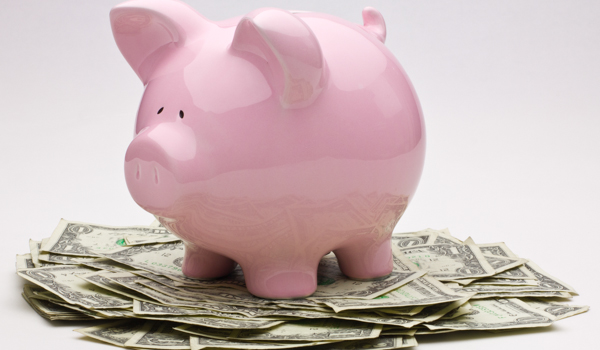In case you weren’t aware, biting a big apple isn’t for everyone. Forget student rates or reductions under 25. They don’t exist here and the price is often the same for everyone.
From rents to outings to food, the bill is quickly steep. For which’American dream does not turn into a nightmare, here are some tips to help you calculate your budget.
1. Housing.
It will be your number 1 spending pole. If Parisian rents seem expensive to you, then wait until you see those in New York! Most students go with a roommate, the more affordable option – expect at least $ 1,200 a month for a room in Manhattan or Williamsburg. If that price is too high, don’t panic, you just have to go outside and find a cheaper price – yes, it all comes with one way or another. For example, Anthony pays only $ 850 for a room in his 80 m2 apartment that he shares with 3 other people in the Bedford-Stuyvesant neighborhood. Morad and Maud both live in a large studio in Astoria, Queens for $ 1,400.
To find “reasonable” prices without being too far from midtown, renting a room in East Harlem is an interesting compromise. Pierre, compensated $ 600 for his internship pays his room of 10m2 $ 950 in a shared apartment of 3 people in the neighborhood and Sébastien and Mathieu share the rent of a large room 5 minutes walk from Central Park for $ 1600. For a 10/15 square meter room in a 2/3 bedroom apartment with a small kitchen and living room, count around $ 1,300 in Brooklyn and Uptown, rather $ 1,500 for South Manhattan.
Elsa, on an unpaid internship, pays $ 1,200 for her small room of about 8m2 in an apartment on the Lower East Side with a tiny living room. If you have a comfortable budget, you can enjoy an apartment with rooftop, terrace, doorman. Gaëlle, VIE in a bank, earns $ 4,500 a month and pays $ 2,100 for her room on the Lower East Side. At this price, it has a living / dining room of 30m2, a fully equipped kitchen, a terrace and a rooftop – the latter of about 30m2. For short term rentals (2/3 months), many people opt for subletting, which is widely used in New York. In this case, it is not uncommon for the current occupant to ask you to settle everything at once. Another possibility is the rental of rooms for students in a hotel – count between $ 2,000 and $ 2,500 per month.
For those who choose to rent an apartment directly from the owner, be aware that the latter can be very demanding. It is preferable to have your rent receipts, recommendations from your former employers… The owners can ask you for a credit check – verification of your solvency, impossible to provide if you have just arrived in the country -, and until 3 months rent payable in advance – 1 month deposit and first and / or last month. You can try to negotiate, but it is better to plan a large sum of money immediately available when you arrive in New York. To get an idea of the market two options are available to you. Check the classifieds site regularly Craigslist.org, and the page facebook Students in New York.
2. Fill your stomach.
Food will be your number two spending hub. Good news – finally! – the city has countless addresses spanning a fairly wide price range. On average, students have a daily budget that ranges from $ 15 to $ 20. Nothing like a coffee to start the day off right. Its price varies depending on its size, quality and where you take it. Count $ 1 for one small coffee with milk in the “corner shops”and up to $ 4 or more at larger locations “fancy”.
At lunchtime, you will find something to fill you up at the local sandwich shop for less than $ 10. For dinner, it is common to buy a slice of pizza (from $ 3) or order food – Indian and Chinese restaurants remain the most accessible and offer dishes around $ 10. It is rare to cook in New York. However, if you wish you can do your groceries at the supermarket – which is not lacking here. Things get tough on weekends. A brunch with friends will quickly cost you $ 20, tax and tip included. Regarding alcoholic drinks, plan at least a budget of $ 8 for a glass of wine and around $ 7 for a beer.
3. Getting around and calling.
To get around, the most profitable option is to take an unlimited metro / bus card for thirty days. When you know that a single ticket costs $ 2.50, the monthly card at $ 112 is profitable. Getting around Manhattan by taxi will cost you around $ 15, Brooklyn $ 20. Finally, you will need a means of communication during your stay. An unlimited phone plan will cost you around $ 60 per month.
4. Leisure and sport.
Opera, concerts, cinema, basketball games, hockey … there is no shortage of cultural leisure activities in New York. The most accessible are unsurprisingly the cinema and concerts: $ 20 for a cinema ticket and around $ 25 for a concert ticket in intimate New York venues. The first prices for the opera are $ 27 but you will be seated in the right and left corners at the very top of the hall and you will have a partial view of the stage. To see a Broadway show it is not uncommon to spend a hundred dollars. These outings are among the most expensive in the city. The prices for basketball and hockey games vary widely depending on the teams you want to see. If you plan ahead, you can see the Knicks or Rangers at Madison Square Garden for $ 47.
Do you want to pay attention to your figure or do you like sports? To practice regular physical activity, again several options exist. Two particularly caught our attention: the gym membership varies according to the standing and the neighborhood – from $ 9 in Harlem to $ 150 in the trendy Equinox rooms – and jogging in Central Park – free with the squirrels as a bonus .
Now is the time to do the math. Most of the students surveyed estimate that they spend just over $ 1,000 a month on living, regardless of their rent. Plan therefore at least a budget of $ 2000 per month all inclusive, because even for the most economical it will be difficult to spend less.
–


